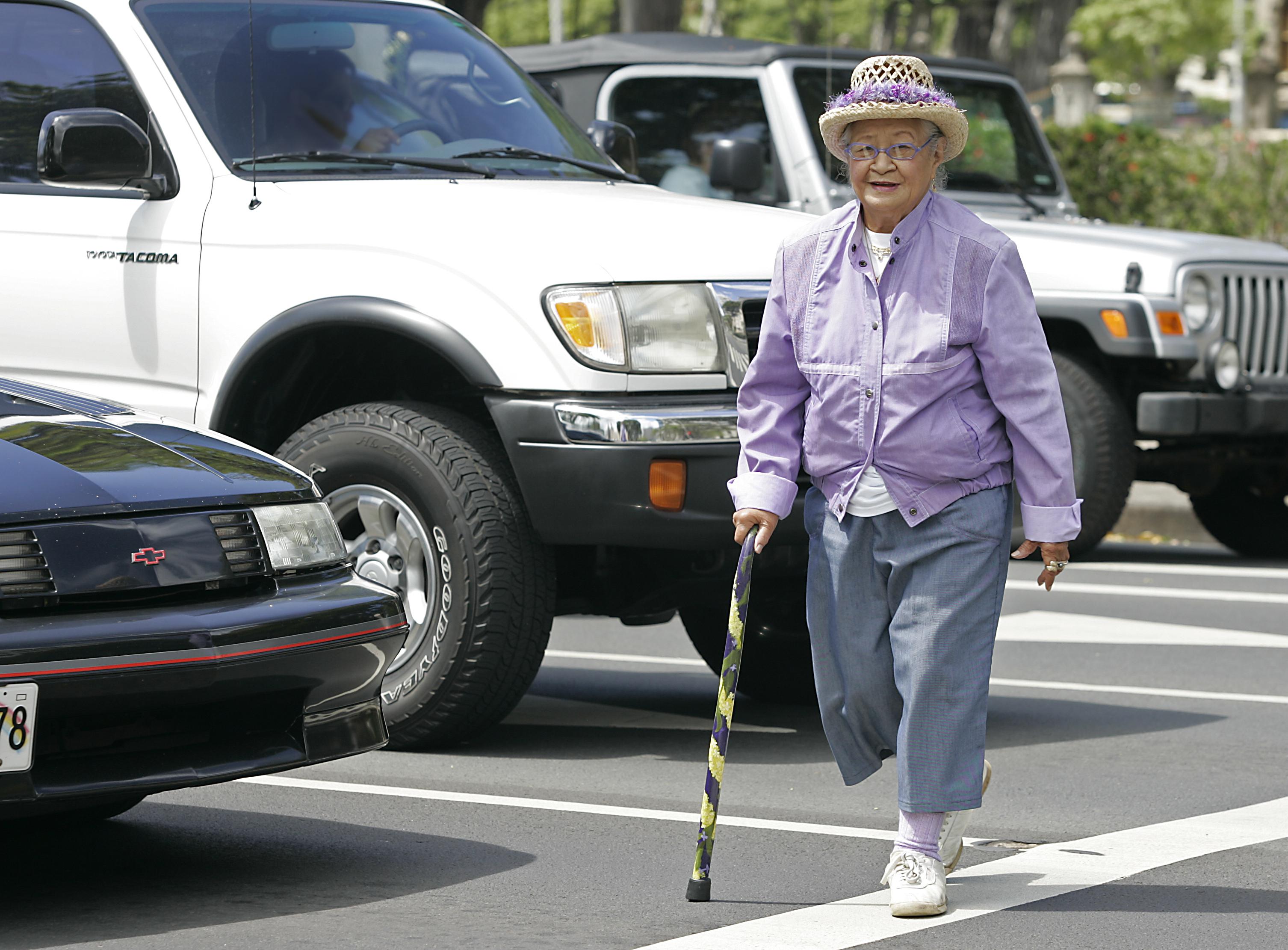AARP Hearing Center

Hawaii ranks first in pedestrian deaths among older residents age 65+ according to a national report released today. The report, Dangerous By Design 2014, ranks America’s major metropolitan areas and states according to a Pedestrian Danger Index (PDI) that indicates the likelihood a person walking the local streets will be hit be a driver of a vehicle and killed.
While Hawaii’s overall PDI is 34.97, which placed it 28th nationally, the state was ranked most dangerous in the nation for pedestrians age 65 and older. Adults age 65 and older comprise just 13.7 percent of Hawaii’s population, but accounted for nearly 42 percent of pedestrian fatalities across the state from 2003-2010. Older adults died at a rate of 6.8 per 100,000 residents in Hawaii, compared to 1.50 per 100,000 for residents under age 65. For people age 75 and older, the rate is an astonishing 9.75 per 100,000 capita, compared to a national rate of 3.96.
“This report shows that Hawaii has a long way to go toward creating a safer pedestrian environment, especially for older residents” said AARP Hawaii Director of Outreach Jackie Boland. “Given the dangerous mix of vehicles and pedestrians on our roadways, combined with the rapid aging of our population, we have a responsibility to the public to be both vigilant and proactive on this issue.”
In the decade from 2003-2012, more than 47,000 people nationwide died while walking on streets (262 of them in Hawaii).The majority of pedestrian deaths occur on roadways that are dangerous by design — engineered and operated for speeding traffic with little to no provision for the safety of people walking, biking or using public transit. According to the report, these deaths are preventable through policy, design and practice – with local communities, states and the federal government each playing an important role in making our streets safer.
In recent years both the state of Hawaii and the City and County of Honolulu have passed Complete Streets policies requiring state and county transportation departments to accommodate access and mobility for all users of public roads, including pedestrians, bicyclists, transit users, motorists, and people of all abilities.
Meanwhile, federal dollars have been invested in thousands of miles of state and local roads in the heart of communities. In fact, 68 percent of all pedestrian fatalities nationally over the past decade occurred on federal-aid roads — roads that follow federal guidelines and are eligible to receive federal funds.
AARP strongly endorses passage of the federal Safe Streets Act, which would help ensure that planners and traffic engineers design, construct, and operate roads with the safety of all users in mind. The bipartisan legislation calls on the U.S. Department of Transportation, as well as state and local transportation agencies that use federal funds, to consider the safety of all users when they build new streets and roads or substantially rebuild existing ones.
Safe mobility options are key to the ability of mid-life and older residents to maintaining their independence. Fully one-fifth of persons age 65 and above does not drive. Yet almost half of respondents to a national AARP survey of persons age 50 and above said they cannot safely cross the main roads in their neighborhoods.
Between 2003 and 2013, 262 people were killed while walking in Hawaii, representing 20.6 percent of the 1,269 traffic-related fatalities in the state during this period.
Dangerous By Design is released by the National Complete Streets Coalition, a program of Smart Growth America, in conjunction with groups including AARP and the American Society of Landscape Architects. The report shows the urgent need to make our roadways safer for pedestrians nationwide.































































